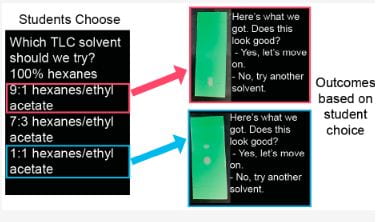Julybeth Murillo, School of Social Sciences
Hispanic Serving Institutions
Aguilar- Smith states that a Hispanic Serving Institution (HSI) is a “public and private 2- and 4-year postsecondary institution in which at least a quarter of the institution’s full-time equivalent undergraduates are Latinx, and half are eligible for federal financial aid” (1: 2021). In her research she finds that HSI’s seeking racialized funding have conflicting reasons and capitalize on their Latinx students by “$erving” and are race-evasive; thus, emphasizing the dire need for defining “Hispanic-serving” and “servingness” and what it means in practice (3: 2021).
Being at UCI, a designated Hispanic Serving Institution, signifies the growing need of fostering community among the Latinx students and faculty and ensuring student success. Additionally, Latinx students voices need to be included to guarantee that UCI is directly addressing the inequities and discrimination faced by the Latinx community.
The lack of concrete conceptualizations of servingess and Hispanic-serving does not signify that we cannot address inequities and inequality faced by Latinx students through the implementation of a Critical Latinx Pedagogy and ensuring voces perdidas (lost voices) are heard. In the following paragraphs, I will explain Critical Latinx Pedagogy and voces perdidas; then, I will provide strategies for applying Critical Latinx Pedagogy in the classroom.
Critical Latinx Pedagogy
Anita Casavantes- Bradford and Alberto Morales discuss the use of Critical Latinx Pedagogy in Chc/Latx courses whom students are majority Latinx (2021). They encourage the practice of a Critical Latinx Pedagogy that , “ embraces, engages and empowers diverse Latinx students, while providing opportunities for students of all backgrounds to gain a deeper understanding of the experiences of Latin American-origin people in the United States” (2: 2021). In the classroom, adopting a Critical Latinx Pedagogical lens allows students to reflect on their experiences and intersectional identities while placing course content into context.
Furthermore, this inclusive framework aims to, “to provide non-Latinx students with a new appreciation of the centrality of Latinx experiences within U.S. history and an opportunity to reflect on how their own identities and experiences are intertwined with those of Latinx and other minoritized U.S. communities; and to foster new solidarities and social justice commitments among students of all backgrounds” (1: 2021).
Voces Perdidas
As a teaching assistant for Intro Chicano Studies 61, I reflected on my positionality as a Latinx graduate student raised in Southern California in an immigrant ethnic enclave and how that informs my perceptions of education and learning. In my discussion sections, students would embrace their bilingualism and speak in Spanish because they felt comfortable knowing they were understood and heard by me. This experience highlights how these “voces perdidas (lost voices)” are unheard and oppressed in academia and may only manifest in few spaces like Chc/Latx courses (Salinas 2017). To make voces perdidas heard we need to, “acknowledge, validate, and empower non-English-speaking communities” (Salinas 2017).
Implementing a Critical Latinx Pedagogy (Casavantes-Bradford and Morales 2021)
- State your positionality on first day and on the syllabus. Address these questions:
- How will you support Latinx students and the intersectionality of their identities (documentation and immigration status, gender, socioeconomic status and more)?
- How will you create solidarity among Latinx and Non-Latinx students?
- Address the discomfort that may arise with discussing oppression, violence, racism, and imperialism:
- Give students the opportunity to reflect on their experiences and internalize how the course content has influenced their perceptions of their own community or others.
- Provide counseling and other well-being resources for students and or spaces outside of the classroom to have conversations.
- At the University of California-Irvine the Counseling Center offers therapy services and other resources for students.
- Discuss how the use of Spanish in the classroom can result in discomfort or comfort.
- Create active learning tasks that allows students to engage with Latinx music, poetry, art, literature and dance.
- A useful tool is Jamboard which is a digital whiteboard that allows students to participate in real-time. Jamboard is integrated with Google and the virtual whiteboard can be shared using a link. For example, in my classes I ask students to share their thoughts on a Latinx song and then I organize their responses by themes. I use these themes to guide the class discussion.
- Create opportunities for collaborative conversations by encouraging Walk and Talks around the classroom or outside.
- If I notice that students are not participating and need a break, I ask students to find a partner and walk for five minutes (outside the classroom if the weather permits) while discussing a prompt or answering a question I posed.
Sources:
Aguilar-Smith, S. (2021). Seeking to Serve or $erve? Hispanic-Serving Institutions’ Race-Evasive Pursuit of Racialized Funding. AERA Open. https://doi.org/10.1177/23328584211057097
Anita Casavantes Bradford & Alberto Eduardo Morales (2021) Toward a Critical Latinx Pedagogy: A Multi-Generational Reflection on Teaching and Learning in the U.S. Latinx History Survey and Beyond, Journal of Latinos and Education, DOI: 10.1080/15348431.2021.1910035
Cristobal Salinas Jr. (2017) Transforming academia and theorizing spaces for Latinx in higher education: voces perdidas and voces de poder, International Journal of Qualitative Studies in Education, 30:8, 746-758, DOI: 10.1080/09518398.2017.1350295

